The “Butterfly effect”: College of Science students and faculty promote environmental sustainability through simple gardening practices
June 14, 2023
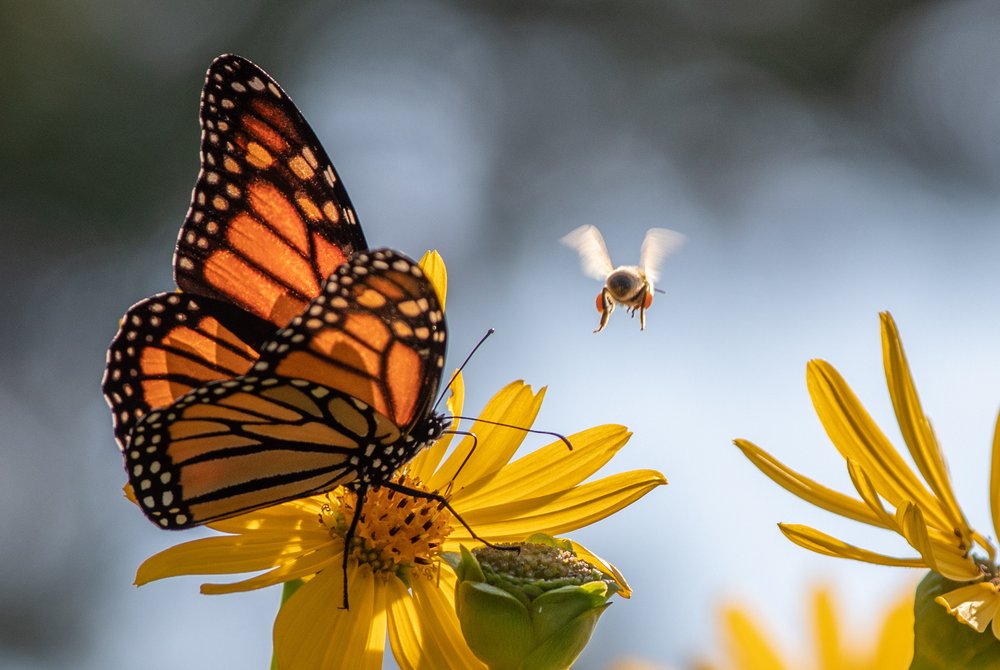
"Mend your garden and the butterflies will come," wrote Brazilian poet Mario Quintana. This seemingly simple verse holds a profound truth, both for our connections with others and for the natural world. As monarch butterfly populations dwindle at an alarming rate, Quintana's words serve as a powerful call to action. By nurturing and restoring their critical habitats, we can ensure these magnificent creatures continue to grace our gardens for generations to come.
– Mary Struck, via Adobe Stock
Louisiana is in the path of the most extensive and multi-generational butterfly migration — the migration of the monarch butterfly. Native to North America, monarchs migrate in the spring when they leave their wintering grounds in Mexico and Southern California to travel northward, all the way to Canada. As they fly across the Gulf of Mexico, they make their way through southern states where they find suitable habitats and nectar-rich flowers, like milkweed, to fuel their journey.
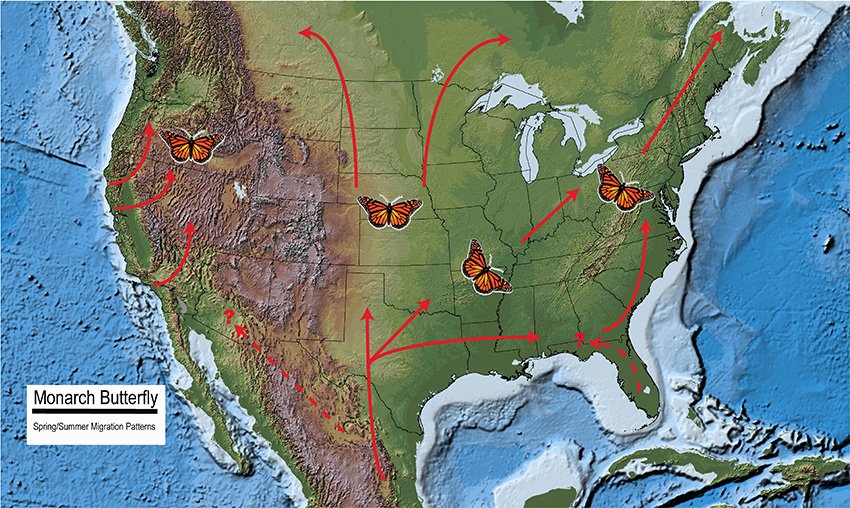
Monarch Butterfly Spring and Summer Migration Patterns.
– Source: U.S FOREST SERVICE.
These iconic butterflies are not only beautiful creatures with an impressive navigation system but are also crucial pollinators in various ecosystems. They contribute to the reproduction of many plant species, including those that are food sources for other wildlife. However, the population of migratory monarch butterflies has declined dramatically in recent decades, making to the list of endangered species. In just one year, monarch’s wintering grounds has dropped by 22%. Loss of habitat, particularly the destruction of milkweed plants due to agriculture and urbanization, pesticide use, and climate change are among the major threats facing monarch populations.
Seemingly small efforts, such as creating a butterfly-friendly garden, can have far-reaching and significant impacts for the recovery and conservation of monarchs and other pollinators. Pollinator gardens can act as steppingstones, creating corridors of suitable habitats for butterflies. By creating a network of gardens, the movement and gene flow between butterfly populations can be enhanced, which is crucial for maintaining genetic diversity and adapting to changing conditions. Therefore, ensuring habitat connectivity along monarchs’ migration routes is critical for supporting their survival, reproduction, and population recovery.
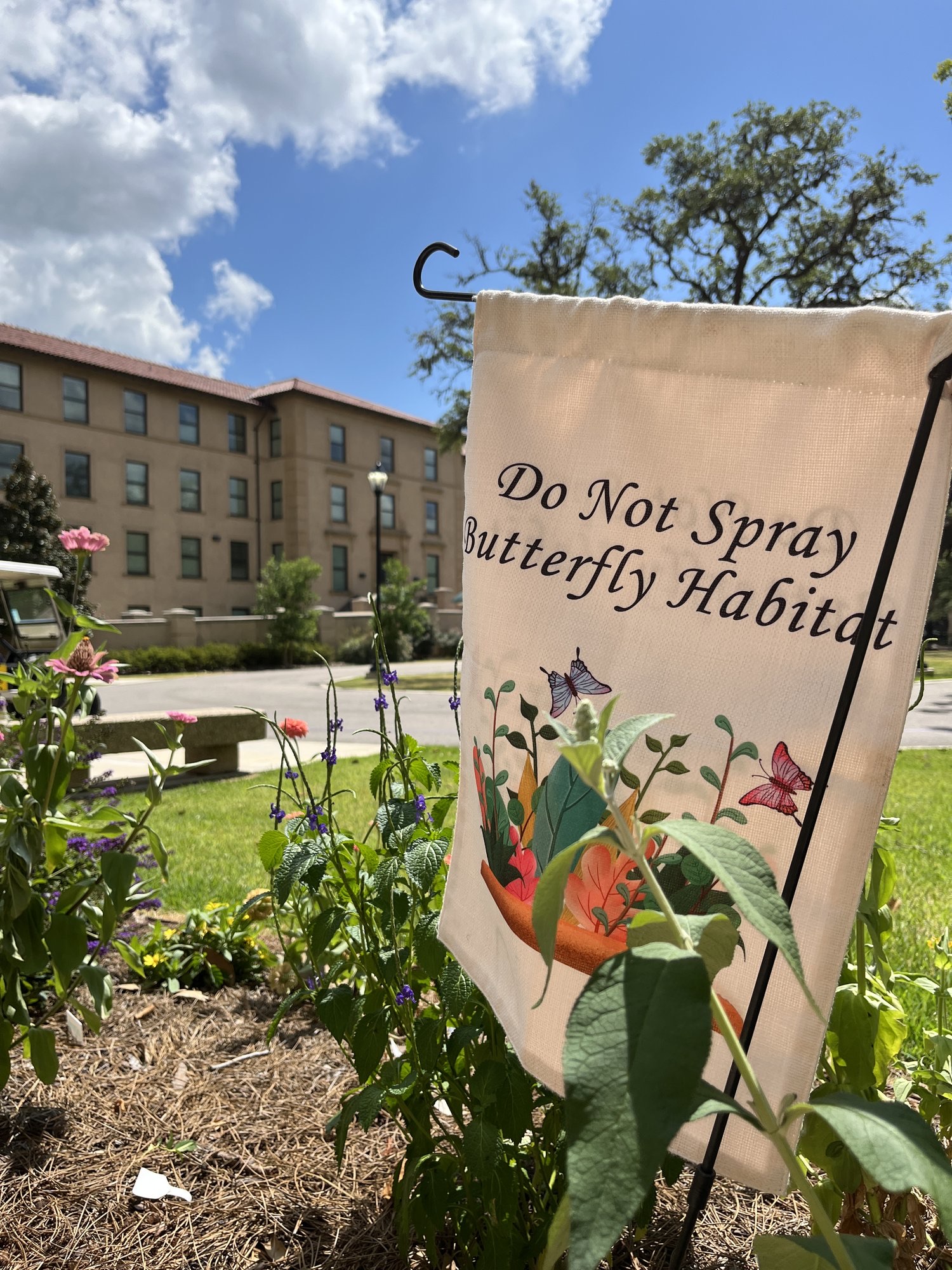
Butterfly friendly gardens should be free from pesticides.
– Bianca Scolaro.
The Science Residential College (SRC) at LSU has taken this concept and turned it into an inspiring student-led sustainability project. The Horseshoe Gardening Club started with a grant to build two pollinator gardens in front of Evangeline Hall — one of the residence halls in what is collectively known as the Horseshoe community. The overall goal of this program is to promote sustainable gardening practices while educating residents about pollinators, as well as native and invasive species. The initiative aims to establish habitats that are specifically designed to support the needs of monarch butterflies and other pollinating insects native to Louisiana: abundant with native plants, such as swamp milkweed (Asclepias incarnata) or Common Milkweed (Asclepias syriaca), and free from pesticides.
Residents of the Horseshoe will have the opportunity to be actively engaged in the establishment and upkeep of the pollinator garden, contributing to the preservation and safeguarding of the local ecosystem, while embracing the vibrant living-learning environment fostered by the SRC.
The Gardening Club had its first meeting in October 2022, which was led by Dr. Hollie Hale-Donze (Faculty Rector of the College of Science and Distinguished Instructor), Ryan Campen (Residence Coordinator), and Resident Assistants: Kaitlyn Hall (Senior Chemistry major), Clair Burrow (Sophomore Coast & Environment major), Angelina Treglia (Sophomore English major), and Frank Perez Ortega (Junior Pre-Nursing major). The club’s hope is that this garden will establish a tradition that will pass down knowledge and strengthen the community for future generations of SRC residents.
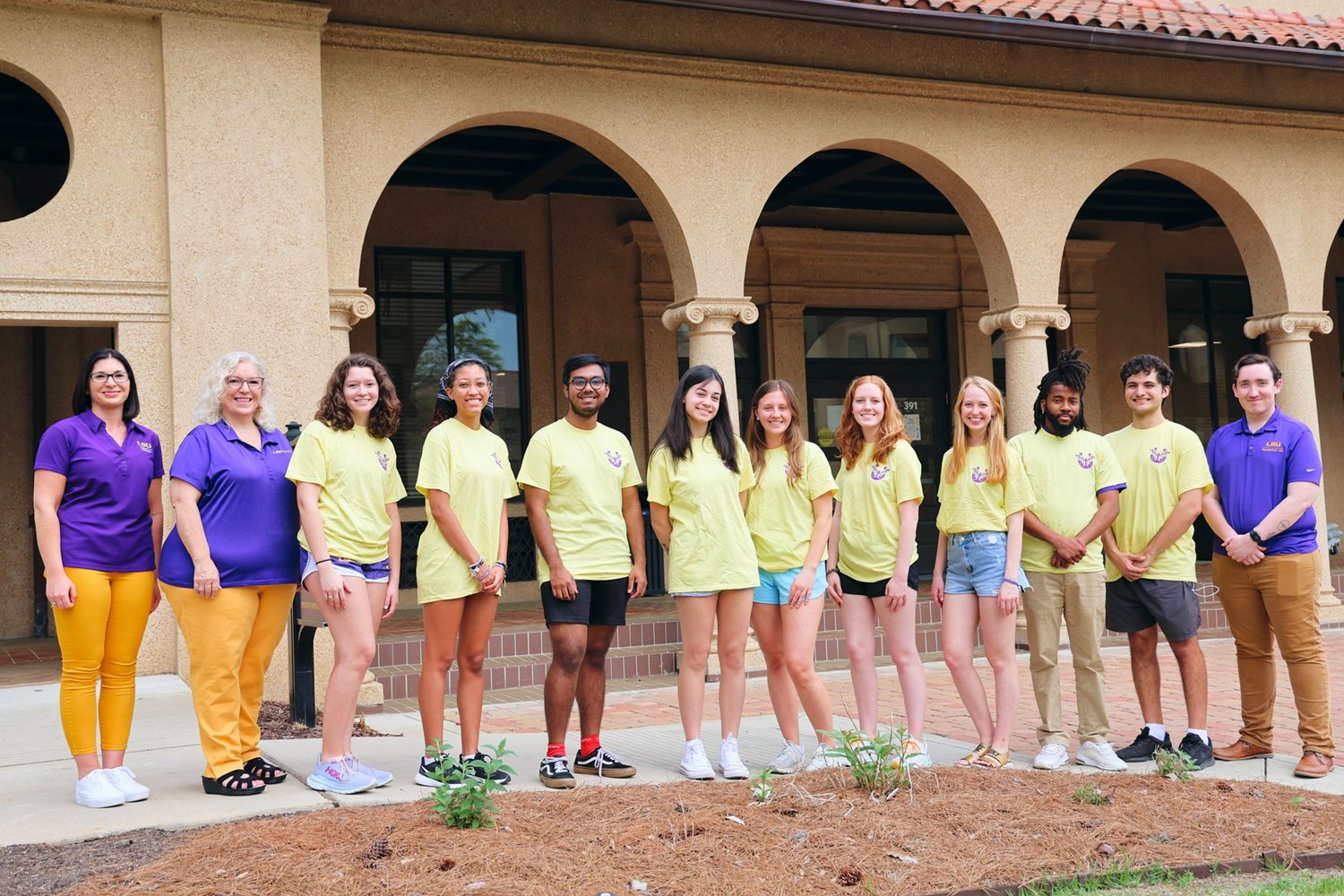
The Horseshoe Gardening Club.
– Ricky Bryant.
“The pollinator garden is a great educational experience teaching residents basic gardening skills and planet stewardship. This allows students to get out of their rooms and connect to nature, their peers, and the Horseshoe community”, says Dr. Hollie Hale-Donze.
The program was recently awarded the Educational Program of the Year at the 2023 Residential Education Banquet and has already made noticeable impact in the Horseshoe’s community and surroundings. “The most gratifying aspect for me has been witnessing the students’ excitement and eagerness to be involved in the garden. I really enjoyed seeing the students’ creativity and artistic side with the addition of the memory rocks in the garden”, says Allison Hargrave — SRC Advisor and Academic Counselor.
Dr. Hale-Donze also has enjoyed receiving “comments from all the LSU staff who work near the gardens who share their appreciation for the beauty these gardens have brought to the Horseshoe. I know it brightens my day to see the growth of the flowers and the pollinators that it has attracted to date.”
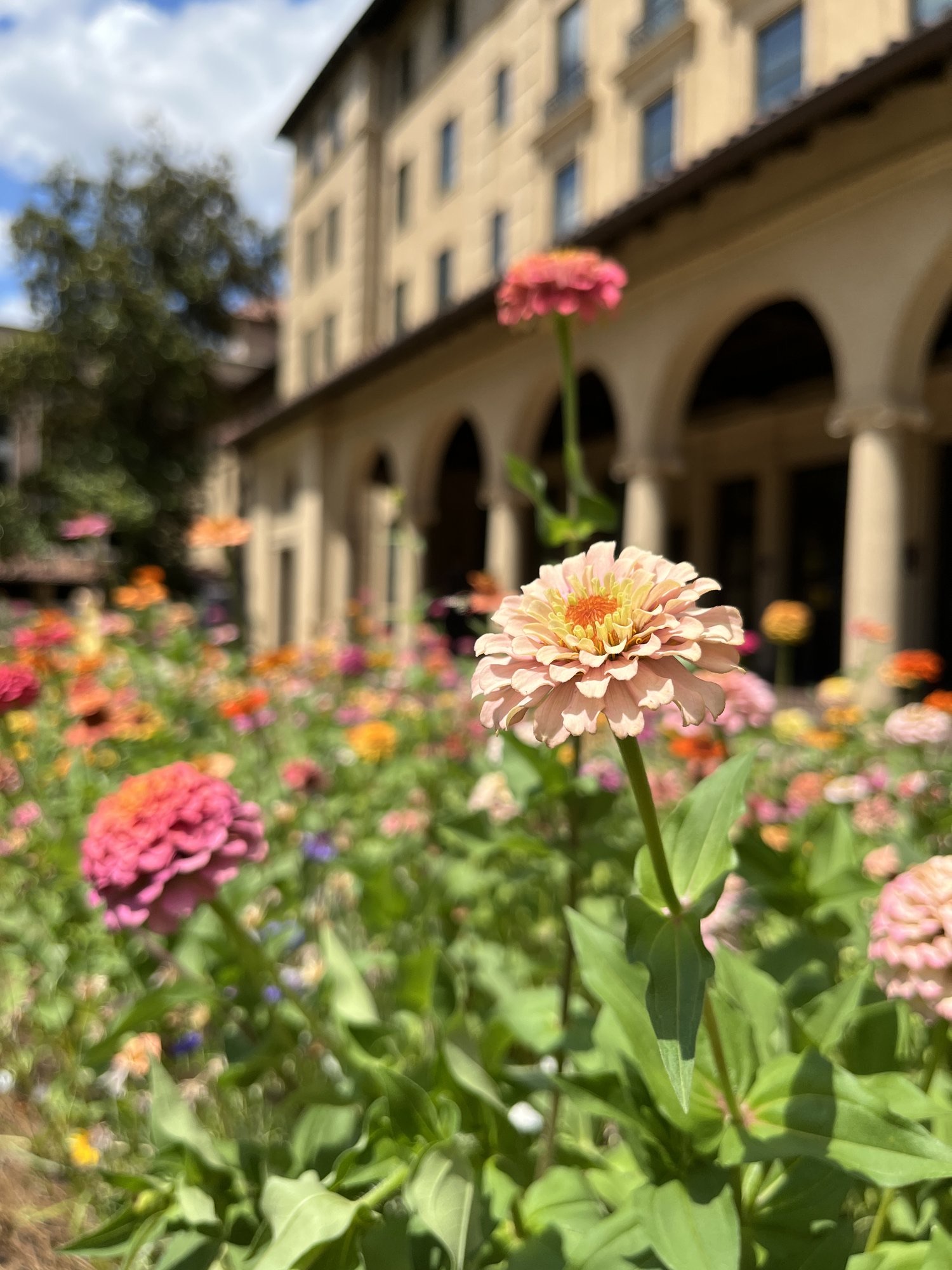
The Horseshoe pollinator garden, located in front of Evangeline Hall.
– Bianca Scolaro
The gardens have also proven to be a magnet not only for gardening enthusiasts and pollinator insects but also some playful visitors. “In the fall, we noticed the toilet paper rolls — used to protect seeds we planted — were disappearing from the garden not long after being placed. Turns out, the campus squirrels were stealing them to build their nests” recalls Allison.
While the gardens are still in their early stages, they have already set in motion a ripple effect, generating small waves of awareness and action. The hope is that these gardens will flourish and serve as a source of inspiration for others to cultivate and mend their own gardens... and the butterflies will come.











